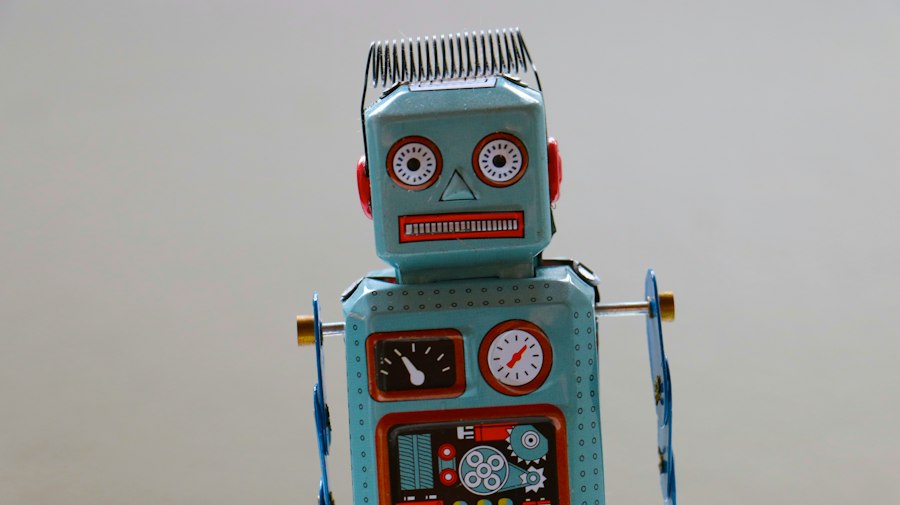There are several benefits to using robot floor cleaners in industrial buildings:
Increased efficiency and productivity: Robot floor cleaners can cover large areas quickly and efficiently, saving time and labor. They can operate autonomously or be programmed to follow specific cleaning routes, ensuring thorough coverage of the entire floor space. This increased efficiency allows employees to focus on more important tasks, ultimately improving overall productivity.
Cost savings: While the initial investment in a robot floor cleaner may be higher than traditional cleaning methods, the long-term cost savings are significant. By reducing labor costs and increasing efficiency, businesses can save money in the long run. Additionally, robot floor cleaners require less water and cleaning solutions compared to manual cleaning methods, further reducing costs.
Improved cleaning quality: Robot floor cleaners are designed to provide consistent and thorough cleaning. They are equipped with advanced sensors that can detect dirt, debris, and spills, ensuring that no area is missed. This results in a higher level of cleanliness and reduces the risk of accidents or injuries caused by slippery or dirty floors.
Reduced labor costs: Hiring and training cleaning staff can be costly for industrial buildings. By utilizing robot floor cleaners, businesses can reduce the need for manual labor, saving on wages and benefits. This also eliminates the need for constant supervision and allows employees to focus on more specialized tasks.
Enhanced safety: Industrial buildings often have hazardous areas that require special attention during cleaning. Robot floor cleaners can be programmed to avoid these areas or equipped with sensors to detect and navigate around obstacles. This reduces the risk of accidents and injuries to both employees and the robot itself.
Understanding the Different Types of Robot Floor Cleaners
There are several types of robot floor cleaners available for industrial buildings, each with its own features and capabilities:
Autonomous vs. manual: Autonomous robot floor cleaners operate independently, using sensors and mapping technology to navigate and clean the floor space. Manual robot floor cleaners, on the other hand, require human intervention to operate and control their movements.
Scrubber vs. sweeper: Scrubber robot floor cleaners are designed to scrub and clean hard floors, while sweeper robot floor cleaners are designed to sweep and collect debris from both hard floors and carpets. Depending on the specific cleaning needs of an industrial building, one type may be more suitable than the other.
Ride-on vs. walk-behind: Ride-on robot floor cleaners are larger machines that can be operated by a person sitting on them, while walk-behind robot floor cleaners are smaller machines that require a person to walk behind them and guide their movements. The choice between ride-on and walk-behind depends on the size of the floor area and the level of maneuverability required.
Battery-powered vs. corded: Battery-powered robot floor cleaners offer more flexibility and mobility as they are not restricted by cords or power outlets. Corded robot floor cleaners, on the other hand, require a power source and may have limitations in terms of range and maneuverability.
How to Choose the Right Robot Floor Cleaner for Your Industrial Building
Choosing the right robot floor cleaner for an industrial building requires careful consideration of several factors:
Assessing cleaning needs: Evaluate the specific cleaning needs of the industrial building, including the type of floors, the size of the area, and the level of dirt and debris. This will help determine the appropriate features and capabilities required in a robot floor cleaner.
Evaluating floor types and sizes: Different robot floor cleaners are designed for different types of floors, such as hard floors or carpets. Additionally, the size of the floor area will determine whether a ride-on or walk-behind robot floor cleaner is more suitable.
Considering budget and maintenance costs: Set a budget for purchasing a robot floor cleaner and consider the long-term maintenance costs. It is important to factor in not only the initial investment but also any additional costs such as replacement parts, batteries, and cleaning solutions.
Researching brands and models: Conduct thorough research on different brands and models of robot floor cleaners. Read reviews, compare features, and consider the reputation and reliability of the manufacturer. It is also helpful to consult with industry experts or seek recommendations from other businesses in similar industries.
Preparing Your Industrial Building for Robot Floor Cleaning
| Factors to Consider | Importance | Options |
|---|---|---|
| Size of the Building | High | Large robotic cleaners with long battery life |
| Type of Flooring | High | Robotic cleaners with specific brushes for carpet, tile, or hardwood |
| Obstacles in the Building | High | Robotic cleaners with obstacle detection and avoidance technology |
| Frequency of Cleaning | Medium | Robotic cleaners with scheduling capabilities |
| Budget | Medium | Robotic cleaners with varying price points |
| Brand Reputation | Low | Research and compare reviews of different brands |
Before implementing robot floor cleaning in an industrial building, it is important to prepare the space to ensure optimal performance and safety:
Clearing obstacles and debris: Remove any obstacles or debris from the floor area that may obstruct the movement of the robot floor cleaner. This includes items such as loose cables, tools, or equipment.
Securing loose items: Ensure that any loose items, such as papers or packaging materials, are properly secured or removed from the floor area. These items can get caught in the robot floor cleaner or cause damage to the machine.
Marking off hazardous areas: Identify and mark off any hazardous areas, such as areas with heavy machinery or high voltage equipment. This will help the robot floor cleaner avoid these areas and prevent accidents or damage.
Ensuring proper ventilation: Industrial buildings often have areas with poor ventilation or high levels of dust and fumes. Ensure that these areas are properly ventilated to prevent damage to the robot floor cleaner and to maintain a safe working environment for employees.
Setting Up and Operating Your Robot Floor Cleaner
Once the industrial building is prepared, it is important to properly set up and operate the robot floor cleaner:
Charging and battery maintenance: If using a battery-powered robot floor cleaner, ensure that it is fully charged before each use. Follow the manufacturer’s instructions for proper battery maintenance, including regular cleaning and replacement if necessary.
Programming cleaning schedules: Most robot floor cleaners can be programmed to follow specific cleaning schedules. Set up a cleaning schedule that aligns with the needs of the industrial building, taking into account peak operating hours and any specific cleaning requirements.
Adjusting settings for different floor types: Depending on the type of floors in the industrial building, adjust the settings of the robot floor cleaner accordingly. This may include adjusting brush speed, water flow, or suction power to ensure optimal cleaning results.
Monitoring cleaning progress: Regularly monitor the cleaning progress of the robot floor cleaner to ensure that it is operating effectively. Check for any areas that may require additional attention or adjustment of settings.
Maintenance and Troubleshooting Tips for Robot Floor Cleaners

To ensure the longevity and optimal performance of a robot floor cleaner, regular maintenance is essential:
Regular cleaning and inspection: Clean the robot floor cleaner after each use, removing any dirt or debris that may have accumulated. Inspect the machine for any signs of wear or damage and replace any worn parts as necessary.
Replacing worn parts: Over time, certain parts of the robot floor cleaner may wear out and require replacement. This may include brushes, filters, or batteries. Follow the manufacturer’s instructions for proper replacement and ensure that genuine parts are used.
Troubleshooting common issues: Familiarize yourself with common issues that may arise with the robot floor cleaner, such as error messages or malfunctioning sensors. Consult the user manual or contact customer support for troubleshooting guidance.
Contacting customer support: If experiencing any issues or difficulties with the robot floor cleaner, do not hesitate to contact customer support. They can provide assistance and guidance to resolve any problems.
Maximizing Efficiency and Productivity with Robot Floor Cleaners
To maximize the efficiency and productivity of robot floor cleaners in industrial buildings, consider implementing the following strategies:
Scheduling cleaning during off-hours: Schedule the robot floor cleaner to operate during off-hours when there are fewer employees present. This minimizes disruptions and allows for uninterrupted cleaning.
Utilizing mapping and navigation features: Take advantage of the mapping and navigation features of the robot floor cleaner to optimize cleaning routes. This ensures that all areas are covered efficiently and reduces unnecessary movements.
Implementing maintenance routines: Establish regular maintenance routines for the robot floor cleaner, including cleaning, inspection, and replacement of worn parts. This helps prevent breakdowns and ensures consistent performance.
Training staff on proper usage: Provide training to employees on how to properly operate and maintain the robot floor cleaner. This includes understanding its features, programming cleaning schedules, and troubleshooting common issues.
Safety Considerations When Using Robot Floor Cleaners in Industrial Buildings
While robot floor cleaners offer many benefits, it is important to prioritize safety when using them in industrial buildings:
Ensuring proper training and supervision: Ensure that employees who will be operating or working alongside the robot floor cleaner receive proper training on its usage and safety protocols. Supervise their activities to prevent accidents or misuse.
Posting warning signs: Clearly mark areas where the robot floor cleaner will be operating to alert employees and visitors. Use caution signs or barriers to prevent unauthorized access or accidental collisions.
Monitoring cleaning progress: Regularly monitor the cleaning progress of the robot floor cleaner to ensure that it is operating safely and effectively. Address any issues or concerns immediately to prevent accidents or damage.
Maintaining emergency shut-off procedures: Establish clear emergency shut-off procedures in case of any unforeseen circumstances or emergencies. Ensure that all employees are aware of these procedures and can quickly respond if needed.
Advantages of Adopting Robot Floor Cleaners for Industrial Building Cleaning
In conclusion, robot floor cleaners offer numerous advantages for maintaining cleanliness in industrial buildings. They increase efficiency and productivity, reduce labor costs, improve cleaning quality, and enhance safety. By understanding the different types of robot floor cleaners and choosing the right one for an industrial building, businesses can optimize their cleaning processes and save time and resources. Proper preparation, setup, and maintenance are crucial for maximizing the performance and longevity of robot floor cleaners. With careful consideration of safety measures and training, businesses can successfully adopt robot floor cleaners and enjoy the benefits they offer in industrial building cleaning.

